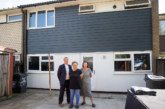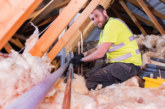Introducing energy efficiency measures into buildings brings benefits and savings, namely the reduction in energy bills and carbon emissions resulting from e.g. better insulation, windows, or a more efficient gas boiler. The poor installation of such measures can, however, give rise to serious unintended consequences that can cause well documented problems for the resident and home owner.
BSI, the business standards company, has just released three publicly available specifications:
- PAS 2035:2019 Retrofitting dwellings for improved energy efficiency. Specification and guidance, and
- PAS 2030:2019 Specification for the installation of energy efficiency in existing dwellings and insulation in residential park homes, which together with PAS 2035 replaces PAS 2030:2017
- PAS 2031 Certification of energy efficiency measure installation in existing buildings, which supersedes PAS 2031:2017.
The new documents specify requirements for a detailed risk assessment approach including evaluation of improvement options, design and specification, monitoring and evaluation as well as addressing installation requirements.
The UK government commissioned the new framework under the Each Home Counts initiative and the standards will provide compliance with the Trustmark government endorsed quality scheme.
The Standards do not cover new-build dwellings, or any buildings used for non-dwelling purposes. These categories are expected to be covered elsewhere in due course.
Ant Burd, Head of Built Environment at BSI said: “The challenge with introducing energy efficiency measures (EEM) is how to create the biggest pay back with the minimum disruption. This is typically easier in green-field projects and new constructions, yet it is imperative we adapt our 29 million existing homes for both environmental and financial benefit.
“This newly revised PAS highlights the requirements for improved process management, ensuring co-functioning of any EEMs already installed in the building and the entire service provision so that problems around over-heating and reduced ventilation are avoided. It also covers the training, skills and vocational qualification requirements for people undertaking such installations.”
PAS 2035/2030:2019 was developed by a steering committee and underwent a peer and public review as is normal practice in such a consensus document.
Further details about for each standard can be found here:
PAS 2035/2030
PAS 2031









